Wreck Arna "Steamboat in Cabo de Gata"
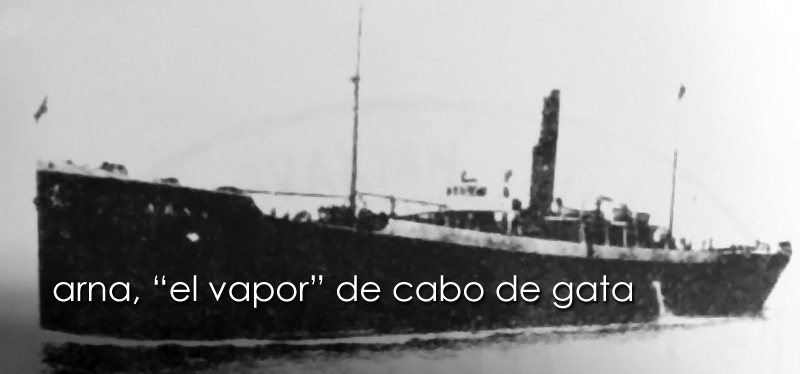
It's a merchant steam ship, and is 100-meters long. It sunk at 1928 when it collided with a natural rock sitting at a depth of 3 meters, and located near the Cabo de Gata Lighthouse.
Its first name was "SS Hillhouse" working for Seville & United kingdom Carrying Co. until 1925. This year it was bought by a Czechoslovakian shipowner, Julius Vesely, son of a powerful Prague banker and owner of the shipping company Zedenkvik A. he put Dubrovnik's base port in the former Yugoslavia and changed the name to Arna.

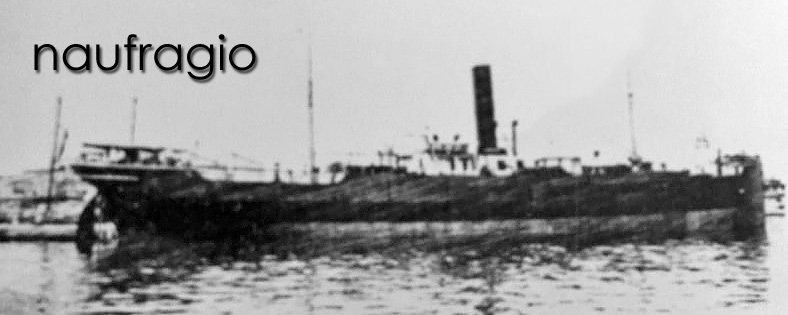
Caracteristicas
Arna, had a length of 99.06 meters of length, 14.63 of sleeve, and 6.64 of draft. It displaced 3049 gross registered tons, trb, and had a triple expansion engine of 279 nominal horses, nhp.
According to the publication of "El Meridional", local newspaper of Almeria, dated February 21, 1928. The Arna, had left the Italian town of Bona, loaded with iron ore bound for the English town of Middlesbrougth, but doesn't arrive there. During the crossing, on February 16, 1928, it hit near the Cabo de Gata in a low known as the flagstone at about 5:30 p.m. It caused great structural damage and sank approximately a mile from it and Corralete beach. He did not have time to launch the lifeboats, but there were no dead and the thirty-three crew including the captain came to swim at cost. Later, the Navy blew up the bridge with explosives.
Situación
At present, it is located at 220 degrees from Cabo de Gata lighthouse, specifically at 36º 42.68 N and 2º 12.30W.
It rests on a gravel bed in a navigational position, its depth varies between thirty and eight meters in the stern, and forty-two in the bow. Its cover is found about thirty meters, and the bow is heading 290 º.
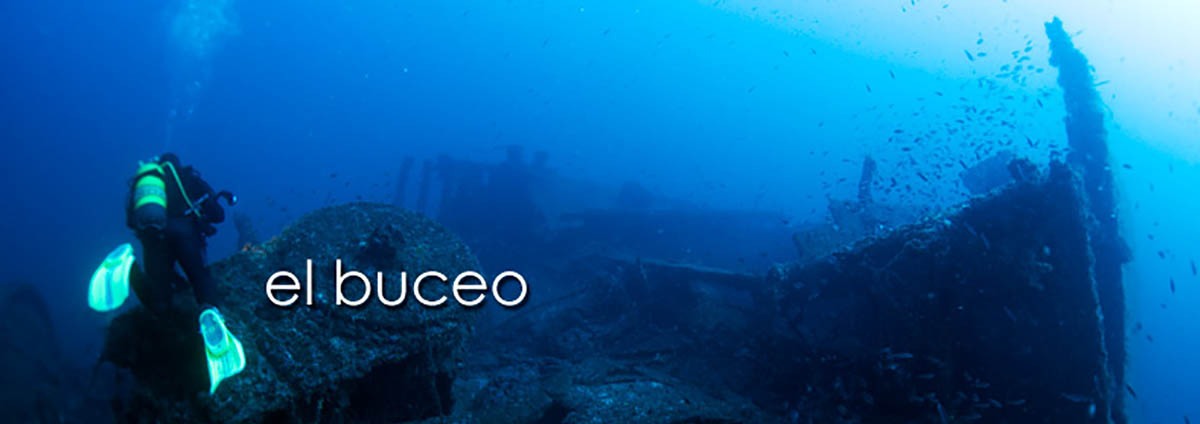
The depth and presence of strong currents in a habitual way make it the most complicated immersion of the Park. That's why when we go, we do it with small groups.
Once anchored, surface conditions are evaluated. We will descend by a rope that will lead us to the wreck, in summer, we will probably find a thermocline. Once in the background the conditions are reevaluated. If the current is still strong, the diving takes place in the area of the stern of the boat, which is the best preserved, it will be very close to the deck. We recommend not to go through roofed areas, because the ship is in an advanced state of deterioration. In this type of dive we can appreciate more carefully some of the structures of the ship, a bathtub, wc, and a porthole completely upholstered by sponges, the cargo hold number four in which we can access and see the backlight state of the beams. We can continue to the rudder and helix area, the maximum depth of the dive would be reached here and can be about thirty-six meters.
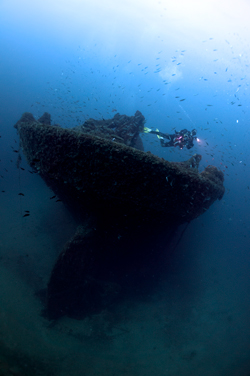
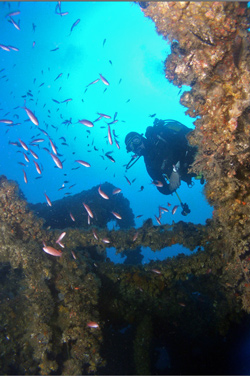
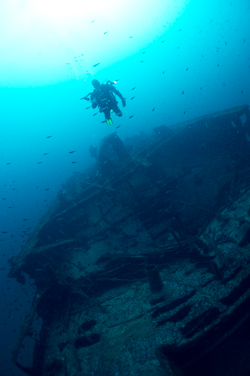
On the contrary, if there was no downstream, we tried to dive the entire wreck. We will start directing towards the bow, we will find the entrance of the hold 3, with the load of iron ore accumulated there. Then a very broken zone, by blasting, in which a connecting rod and a boiler can be identified. Further on we will find the ship heeled towards the port side, with warehouses 1 and 2 sunk and full of cargo. If we continue advancing, we find the area of the bow separated and without list. We will visit the area of the roof and the interior area.
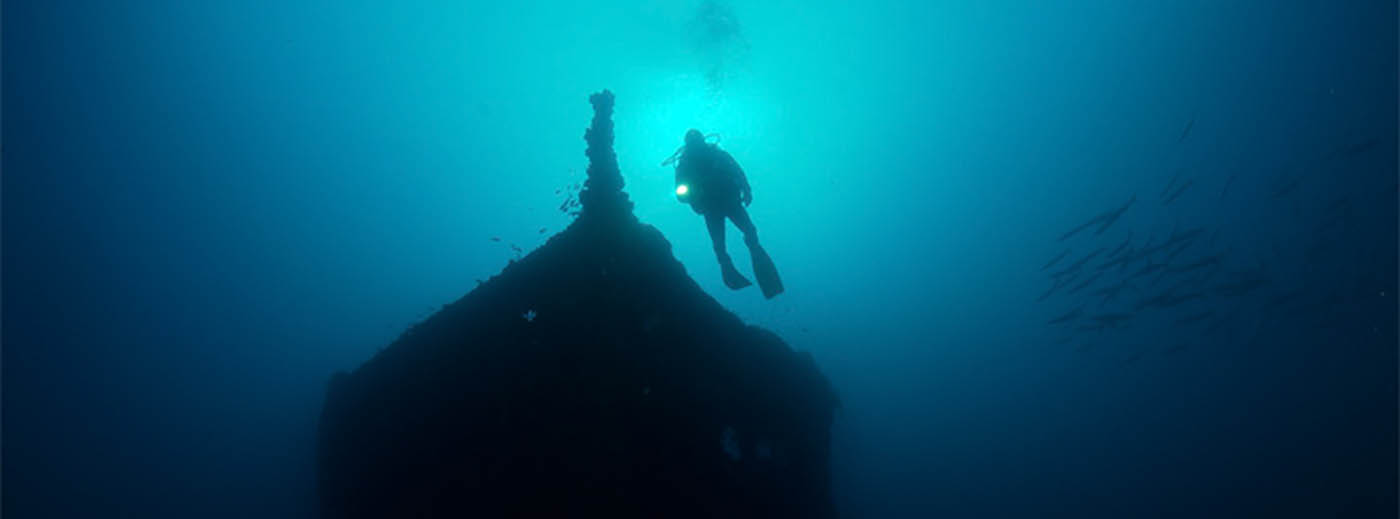
Life
If for some reason life in the steam stands out because of its size, since most of the time it has cold water, we find species that are not very frequent in other types of dives, lots of nudibranchs, many types of anemones, white gorgonia, ceriantos, laminaria. But, for what the divers really remember it most, it's because of the size and quantity of fish. You can find large banks of bream of all types, mojarras, real, breados, morenas, striped burritos, corvallos, salpas, three tails, groupers and large haddock are permanent residents, they must be added a lot of pelagic, barracudas, dentex, milk, tuna, stealing, to which we must add a moonfish or sea eagle frequently.
Recommendations
We must prudent and know our limitations, attend well to the indications of the briefing, and if you have the nitrox titration use it. Try to maintain the same level of depth as the guide and make the air signals. As for the material, a suit e for cold water, gloves, knife, deco buoy and dive computer.
Requirements
It is located in outer waters, in addition to the regulations of the Natural Park, it does so also to the Marine Reserve. Therefore, in addition to the Qualification that enables you to dive up to forty meters, have dived at least once during the last twelve months and have at least twenty-five dives.


